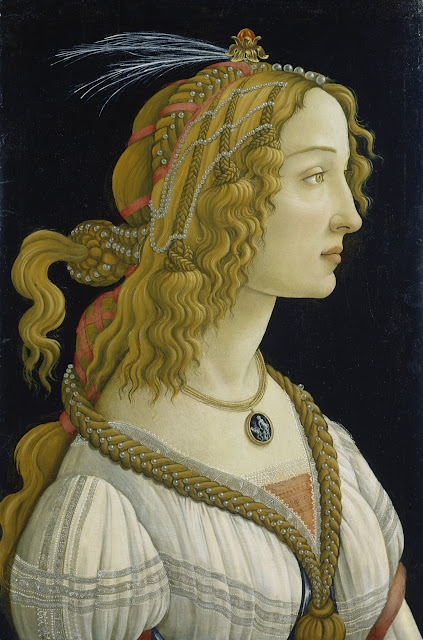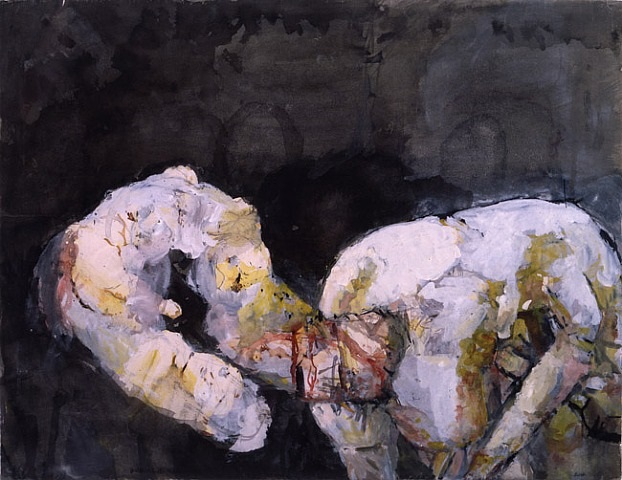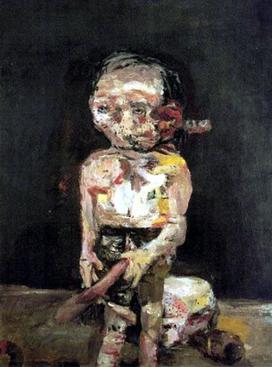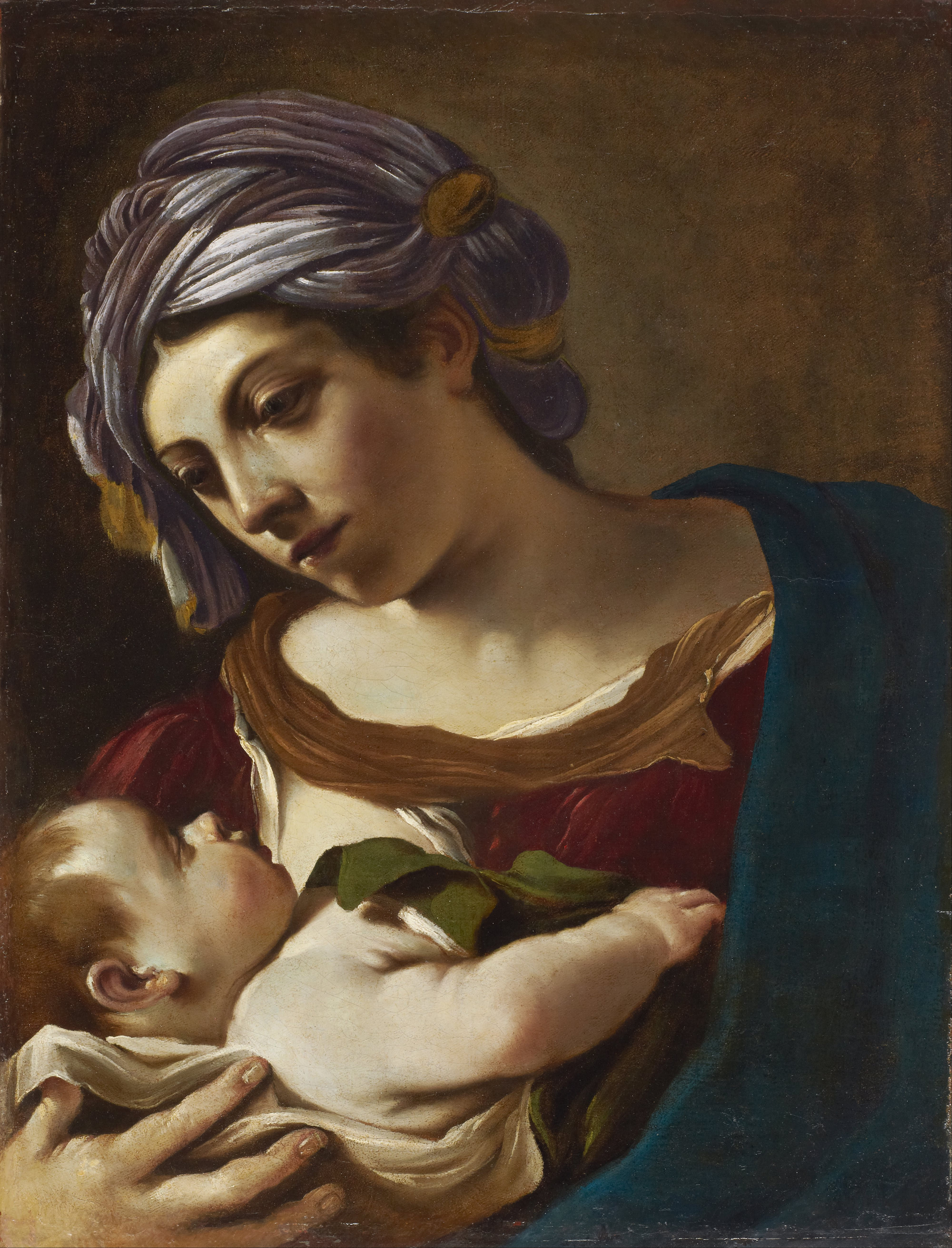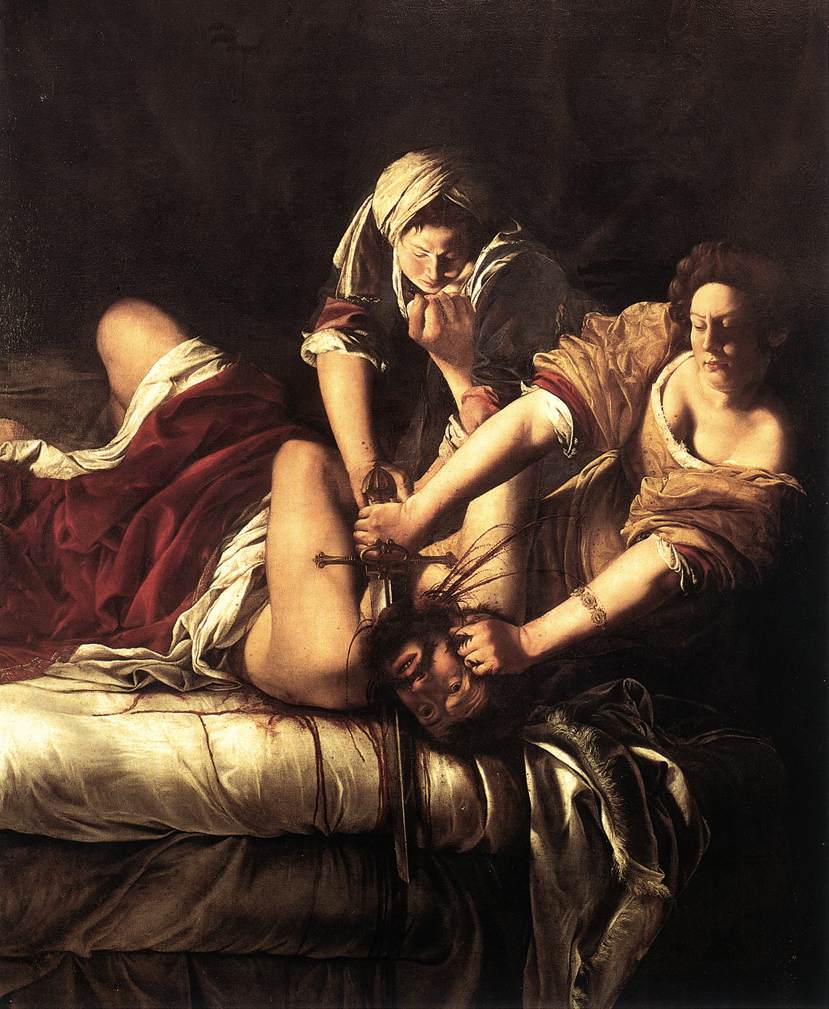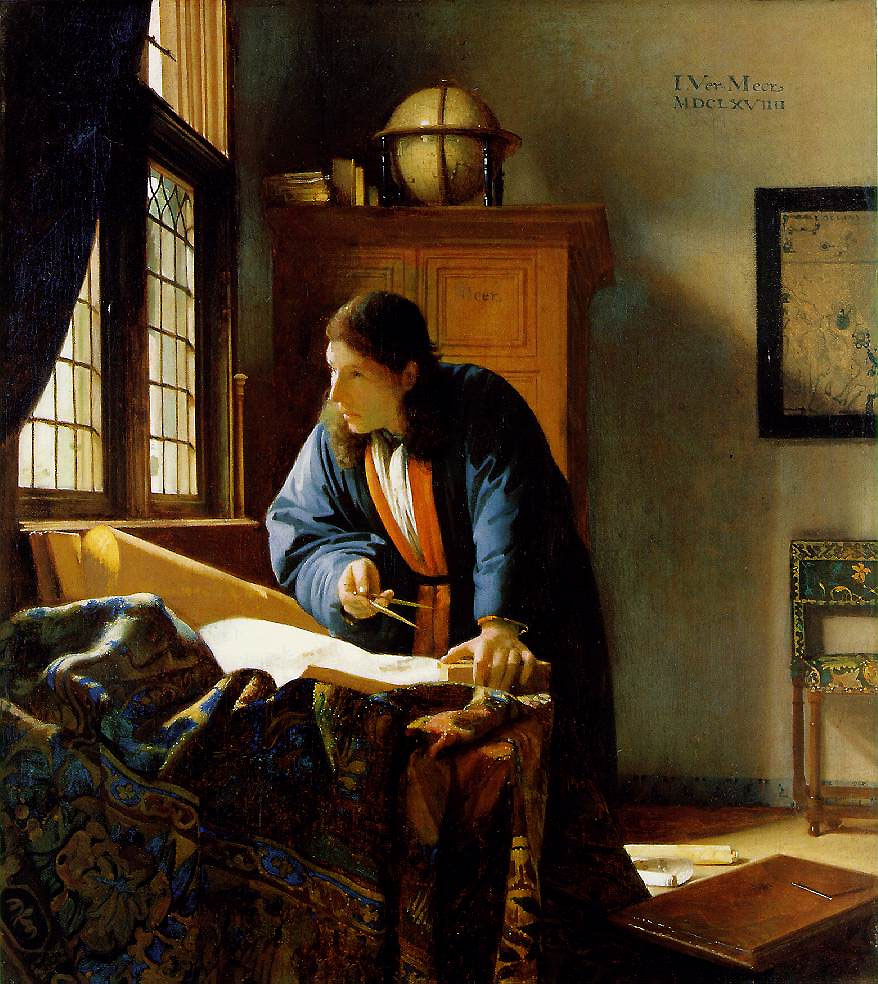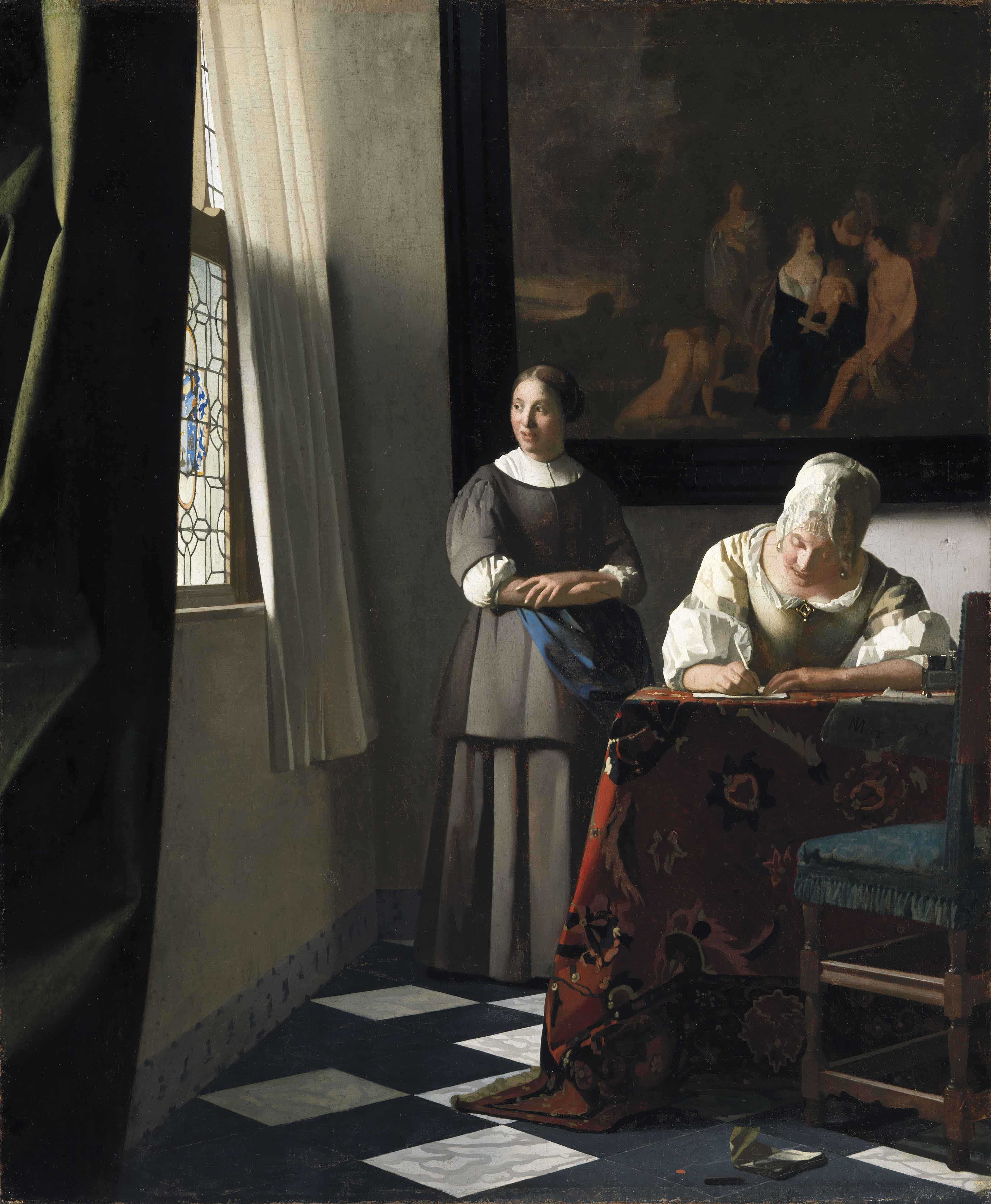For its two-hundredth birthday the Städel Museum is expecting eminent guests: from 7 October 2015 to 24 January 2016, selected Städel works will host sixty-five masterpieces from the world’s most renowned museums for an anniversary exhibition entitled “Masterworks in Dialogue”. The outstanding Städel works will represent a cross-section of the museum’s history while at the same time offering insights into a collection that has evolved over two- hundred years. Companions from far and wide will join them in temporary partnerships and long-awaited unions. Planned by all of the Städel’s curators, the show will be the first ever to spread throughout the galleries of the museum’s collections.
Loans from the Albertina in Vienna, the Museo Thyssen-Bornemisza in Madrid, London’s Victoria and Albert Museum, the Musée d’Orsay in Paris, the National Gallery of Ireland in Dublin, the Mauritshuis in The Hague, the Tate in London, the Vatican Museums, the National Gallery of Art in Washington and elsewhere will travel to Frankfurt am Main for this special occasion.
The superb “anniversary guests” will allow viewers to draw surprising art-historical references and to illuminate and examine the Städel holdings – spanning seven-hundred years of art – anew. “Masterworks in Dialogue: Eminent Guests for the Anniversary” will be accompanied by a series of lectures given by the Städel curators on the history of the museum; the writer Daniel Kehlmann will deliver the introductory talk at the exhibition opening.
The anniversary exhibition will spread out on all four floors and in all areas of the Städel collection. The visitor embarking on a tour of the museum will encounter, for example, prominent “anniversary guests” by such artists as Jan van Eyck, Fra Angelico, Johannes Vermeer or Nicolas Poussin bearing close relationships to works from the Städel’s Old Masters collection.
Masterworks by Edgar Degas, Max Liebermann, Pablo Picasso and Franz Marc will sojourn in the Modern Art collection, and examples by Martin Kippenberger, Georg Baselitz, Thomas Struth, Daniel Richter and Corinne Wasmuht will await discovery in the collection of Contemporary Art.
The Department of Prints and Drawings will present opera magna by Adam Elsheimer, Edgar Degas, Ernst Ludwig Kirchner, Max Beckmann and Rembrandt Harmensz. van Rijn side by side with Städel treasures. The thematic pairs and groups thus formed – numbering forty in all – will be displayed on specially designed coloured pedestals serving not only to explain the ensuing dialogues but also to give them special prominence within the collection presentations.
Loans from the Albertina in Vienna, the Museo Thyssen-Bornemisza in Madrid, London’s Victoria and Albert Museum, the Musée d’Orsay in Paris, the National Gallery of Ireland in Dublin, the Mauritshuis in The Hague, the Tate in London, the Vatican Museums, the National Gallery of Art in Washington and elsewhere will travel to Frankfurt am Main for this special occasion.
The superb “anniversary guests” will allow viewers to draw surprising art-historical references and to illuminate and examine the Städel holdings – spanning seven-hundred years of art – anew. “Masterworks in Dialogue: Eminent Guests for the Anniversary” will be accompanied by a series of lectures given by the Städel curators on the history of the museum; the writer Daniel Kehlmann will deliver the introductory talk at the exhibition opening.
The anniversary exhibition will spread out on all four floors and in all areas of the Städel collection. The visitor embarking on a tour of the museum will encounter, for example, prominent “anniversary guests” by such artists as Jan van Eyck, Fra Angelico, Johannes Vermeer or Nicolas Poussin bearing close relationships to works from the Städel’s Old Masters collection.
Masterworks by Edgar Degas, Max Liebermann, Pablo Picasso and Franz Marc will sojourn in the Modern Art collection, and examples by Martin Kippenberger, Georg Baselitz, Thomas Struth, Daniel Richter and Corinne Wasmuht will await discovery in the collection of Contemporary Art.
The Department of Prints and Drawings will present opera magna by Adam Elsheimer, Edgar Degas, Ernst Ludwig Kirchner, Max Beckmann and Rembrandt Harmensz. van Rijn side by side with Städel treasures. The thematic pairs and groups thus formed – numbering forty in all – will be displayed on specially designed coloured pedestals serving not only to explain the ensuing dialogues but also to give them special prominence within the collection presentations.
Dialogues in the Old Masters Collection
In the Old Masters gallery, for instance, the
Annunciation(ca. 1434/36) by Jan van Eyck (1390–1441) from the National Gallery of Art in Washington
will encounter the same artist’s Lucca Madonna (1437) from the Städel.
The two paintings are among the most beautiful and, in terms of content, most complex Marian images by the most well-known Early Netherlandish artist. Works distinguished by their stunning realism of detail and elaborate spatial and temporal structures, they are still admired for their exquisite artistic rendering today, nearly six hundred years after their execution. Until 1850, both belonged to the splendid Old Masters collection of King William II of the Netherlands; now they will be on view side by side for the first time again in 165 years.
Two portraits of women, one of the fifteenth and one of the nineteenth century, will come together in no less spectacular a meeting:
Sandro Botticelli’s (1445–1510) Idealized Portrait of a Lady (Portrait of Simonetta Vespucci as a Nymph) of ca. 1480/85 from the Städel
and Fazio’s Mistress (Aurelia) (1863) by Dante Gabriel Rossetti (1828–1882) from the London Tate will form companion pieces.
Not only will one of the most famous works from each of these museums’ collections thus be united, but the direct comparison will shed light on astonishing similarities despite the temporal distance of nearly four centuries. The complex manner in which the painting by the Pre-Raphaelite Rossetti reflects on Botticelli’s Simonetta, compositionally speaking, has hitherto gone unrecognized and will now become strikingly evident in the joint display. Both paintings bear a relation to a literary and artistic discourse on the ideal image of female beauty that was revived by the Pre-Raphaelites in the context of studying the works of their Italian idols.
Jan van Eyck (1390-1441)
Annunciation, around 1434/1436
Oil on canvas, transferred from panel painted surface, 90,2 x 34,1 cm National Gallery of Art, Washington, Andrew W. Mellon Collection Photo: National Gallery of Art, Washington
Annunciation(ca. 1434/36) by Jan van Eyck (1390–1441) from the National Gallery of Art in Washington
Lucca Madonna, 1437
Mixed technique on oak, 65.7 x 49.6 cm
Städel Museum, Frankfurt am Main
Photo: Städel Museum - U. Edelmann -
will encounter the same artist’s Lucca Madonna (1437) from the Städel.
The two paintings are among the most beautiful and, in terms of content, most complex Marian images by the most well-known Early Netherlandish artist. Works distinguished by their stunning realism of detail and elaborate spatial and temporal structures, they are still admired for their exquisite artistic rendering today, nearly six hundred years after their execution. Until 1850, both belonged to the splendid Old Masters collection of King William II of the Netherlands; now they will be on view side by side for the first time again in 165 years.
Two portraits of women, one of the fifteenth and one of the nineteenth century, will come together in no less spectacular a meeting:
Sandro Botticelli (ca. 1444/45–1510)
Idealised Portrait of a Lady (Portrait of Simonetta Vespucci as a Nymph), ca. 1480/85 Mixed technique on poplar, 81.8 cm x 54.0 cm
Städel Museum, Frankfurt am Main
Photo: Städel Museum – U. Edelmann – ARTOTHEK
Sandro Botticelli’s (1445–1510) Idealized Portrait of a Lady (Portrait of Simonetta Vespucci as a Nymph) of ca. 1480/85 from the Städel
Dante Gabriel Rossetti (1828–1882)
Fazio’s Mistress (Aurelia), 1863 (revised by the artist in 1873) Oil on mahogany, 43.2 x 36.8 cm
Tate, London
Photo: Tate, London 2015
and Fazio’s Mistress (Aurelia) (1863) by Dante Gabriel Rossetti (1828–1882) from the London Tate will form companion pieces.
Not only will one of the most famous works from each of these museums’ collections thus be united, but the direct comparison will shed light on astonishing similarities despite the temporal distance of nearly four centuries. The complex manner in which the painting by the Pre-Raphaelite Rossetti reflects on Botticelli’s Simonetta, compositionally speaking, has hitherto gone unrecognized and will now become strikingly evident in the joint display. Both paintings bear a relation to a literary and artistic discourse on the ideal image of female beauty that was revived by the Pre-Raphaelites in the context of studying the works of their Italian idols.
Dialogues in the Modern Art Collection
Hardly any of the Städel Museum’s paintings is as well-known to the public as
Johann Heinrich Wilhelm Tischbein’s (1751–1829) portrait of Goethe in the Roman Campagnaof 1787.
Surrounded by testimonies to antiquity, the “prince of poets”, wrapped in a travelling cloak, reposes contemplatively in an ideal Arcadian landscape. On the occasion of the show, this centrepiece of the Frankfurt collection will be presented along with several preliminary studies. What is more, works making reference to the painting will once again bear witness to the popularity of the iconic, world-famous portrait of Goethe. Tischbein began the portrait in 1786, when Johann Wolfgang von Goethe (1749–1832) was sharing living quarters with him and other artists in Rome during his travels in Italy. In later depictions the painting was quoted again and again – now reverently, now tongue-in-cheek – for example in a proposal by Adolf von Donndorf (1835–1916) for the Goethe monument in Berlin and in
Andy Warhol’s (1928–1987) silkscreen of 1982, which has been in the Städel collection since 2000.
Three closely interrelated works by the Expressionist artists
will also be assembled in the Modern Art gallery. The three bathing scenes were presumably executed in 1910 during a joint excursion to the Moritzburg Ponds near Dresden. Painted in a synchronous working process, they represent a kind of contest among equals in which each of the painters had a chance to measure his own potential against that of his colleagues. Kirchner’s version, later reworked, is on a canvas painted on both sides and was only discovered in 2010. Within the framework of the exhibition, the works are being shown together for the first time, thus offering a unique opportunity for what promises to be a suspenseful comparison between the protagonists of the Brücke group.
Johann Heinrich Wilhelm Tischbein’s (1751–1829) portrait of Goethe in the Roman Campagnaof 1787.
Surrounded by testimonies to antiquity, the “prince of poets”, wrapped in a travelling cloak, reposes contemplatively in an ideal Arcadian landscape. On the occasion of the show, this centrepiece of the Frankfurt collection will be presented along with several preliminary studies. What is more, works making reference to the painting will once again bear witness to the popularity of the iconic, world-famous portrait of Goethe. Tischbein began the portrait in 1786, when Johann Wolfgang von Goethe (1749–1832) was sharing living quarters with him and other artists in Rome during his travels in Italy. In later depictions the painting was quoted again and again – now reverently, now tongue-in-cheek – for example in a proposal by Adolf von Donndorf (1835–1916) for the Goethe monument in Berlin and in
Andy Warhol’s (1928–1987) silkscreen of 1982, which has been in the Städel collection since 2000.
Three closely interrelated works by the Expressionist artists
Ernst Ludwig Kirchner (1880–1938) Forest Scene (Moritzburg Lakes), 1910/25 Oil on canvas, 78 cm x 89 cmErnst Ludwig Kirchner (1880–1938),
Städel Museum, Frankfurt am Main Photo: Städel Museum – ARTOTHEK
Max Pechstein (1881–1955) Forest Scene, 1910Max Pechstein (1881–1955)
Oil on canvas, 68 x 79.5 cm Private Collection
© 2015 Pechstein Hamburg / Tökendorf Photo: Private Collection
Otto Dix (1891-1969)
The Artist’s Family, 1927
Oil on wood, 80 cm x 50 cm
Städel Museum, Frankfurt am Main, property of the Städelscher Museums-Verein e.V. Photo: Städel Museum – ARTOTHEK
Erich Heckel (1883–1970)and Erich Heckel (1883–1970)
Group Outdoors, 1910
Oil on canvas, 80 x 95 cm
Merzbacher Kunststiftung
© Nachlass Erich Heckel, Hemmenhofen Photo: Merzbacher Kunststiftung
will also be assembled in the Modern Art gallery. The three bathing scenes were presumably executed in 1910 during a joint excursion to the Moritzburg Ponds near Dresden. Painted in a synchronous working process, they represent a kind of contest among equals in which each of the painters had a chance to measure his own potential against that of his colleagues. Kirchner’s version, later reworked, is on a canvas painted on both sides and was only discovered in 2010. Within the framework of the exhibition, the works are being shown together for the first time, thus offering a unique opportunity for what promises to be a suspenseful comparison between the protagonists of the Brücke group.
Dialogues in the Collection of Contemporary Art
By assembling the works
Sex with Dumplings (1963)
and Big Night Down the Drain (1962/63) (loans from private collections)
with the painting Field (1962) from the Städel Museum holdings,
the exhibition will present the early work of the painter Georg Baselitz (b. 1938) as an important window on the history of West German painting of the twentieth century. The three works to be shown within the framework of the “Masterworks in Dialogue” were all featured in Baselitz’s first solo exhibition in 1963. Owing to their radical painterly qualities they sparked a scandal that would prove legendary. The debate even took on a political dimension: works such as Big Night Down the Drain (1962/63) were confiscated. The ideological controversy over abstract versus representational painting in the young Federal German Republic culminated in Baselitz’s provocative compositions in which carnality took centre stage – both formally and with regard to content – and the sensitivities of the German post- war period seemed mirrored. A striking encounter with Georg Baselitz’s epoch- making early phase will here be made possible.
Another group of works to be placed on view in the Contemporary Art collection in the Städel’s anniversary year will address the topic of the museum as an institution. From the perspective of the photographer Thomas Struth (b. 1954), the museum is not just a place for the preservation of art but also one in which art is created. On the occasion of the bicentennial exhibition, the photo Louvre 3, Paris 1989 (1989) from the Städel holdings will be joined by five further works (loans from the Atelier Thomas Struth) from his Museum Photographs series photographed in the National Gallery in London, the Kunsthistorisches Museum in Vienna and the Art Institute of Chicago. The series focusses on the visitors’ behaviour and their relationship to the art on exhibit. The spectrum of scenes ranges from the indifferent attitudes of tourist groups to the meditative immersion of an individual art viewer seen, for example in Kunsthistorisches Museum 3, Vienna of 1989. The juxtaposition makes the works’ serial character particularly evident.
Dialogues in the Department of Prints and Drawings
In the gallery of the Department of Prints and Drawings, the exhibition will bring together a number of outstanding drawings, paintings and prints. Among the encounters, for example, will be two works by Hendrick Goltzius (1558–1617), an engraver and draughtsman highly admired in the late sixteenth century – works that testify to the astounding development in Goltzius’s mastery of the drawing technique within just a few years.
The virtuoso Portrait of Gillis van Breen drawn by Goltzius in coloured chalk in 1588 was already in the collection of the museum’s founder Johann Friedrich Städel.
The Portrait of Giambologna from the Teylers Museum in Haarlem,executed three years later, provides evidence of the amazingly painterly effect Goltzius was capable of achieving with the sparsest of means.
Two graphic works by the exceptional artist Pablo Picasso (1881–1973) will likewise enter into dialogue. The artist made reference to his eventful and productive life with depictions of his alter ego: the Minotaur, which he staged in drawings and prints. He was captivated not so much by the myth as by the figure’s masculine creatureliness, which he conveyed now as brutish, libidinous, and powerful, now as tender and needy. The two prints from the Suite Vollard on view at the Städel will offer a superb illustration of the dichotomy between strength and weakness in Picasso’s Minotaur.
Blind Minotaur Being Led through the Night by a Young Girl (1934), a print from the Städel collection which, from the point of view of technique, is one of the artist’s most ambitious prints. Reminiscent of a theatre stage, the composition is borne by the contrast between light and dark.
Hendrick Goltzius (1558–1617)
Portrait of Gillis van Breen,1588
Black, red, brown and yellow chalk, 376 x 292 mm Städel Museum, Frankfurt am Main
Photo: Städel Museum – U. Edelmann – ARTOTHEKStädel Museum · Schaumainkai 63 · 60596 Frankfurt am Main · Telefon: +49(0)69-605098-0 · www.staedelmuseum.de
The virtuoso Portrait of Gillis van Breen drawn by Goltzius in coloured chalk in 1588 was already in the collection of the museum’s founder Johann Friedrich Städel.
Hendrick Goltzius (1558–1617)
Portrait of Giambologna, 1591
Black and red chalk, partially gone over with a damp brush; brush and brown and brownish green ink, 370 x 300 mm Teylers Museum, Haarlem, The Netherlands
Photo: Teylers Museum, Haarlem, The Netherlands
The Portrait of Giambologna from the Teylers Museum in Haarlem,executed three years later, provides evidence of the amazingly painterly effect Goltzius was capable of achieving with the sparsest of means.
Two graphic works by the exceptional artist Pablo Picasso (1881–1973) will likewise enter into dialogue. The artist made reference to his eventful and productive life with depictions of his alter ego: the Minotaur, which he staged in drawings and prints. He was captivated not so much by the myth as by the figure’s masculine creatureliness, which he conveyed now as brutish, libidinous, and powerful, now as tender and needy. The two prints from the Suite Vollard on view at the Städel will offer a superb illustration of the dichotomy between strength and weakness in Picasso’s Minotaur.
Pablo Picasso (1881–1973)In the Minotaur Caressing a Sleeping Woman of the year 1933, on loan from a private collection, the beast kneels before a peacefully slumbering female figure, bending his muscular body over her. The threatening look of the bull’s head contrasts with the disconcertingly gentle gesture with which he touches the woman’s hand. This work will be placed on display with the
Minotaur Caressing a Sleeping Woman, 1933
Drypoint on ribbed laid paper, 299 x 365 mm / 339 x 450 mm Private Collection
© Succession Picasso / VG Bild-Kunst, Bonn 2015
Photo: Private Collection
Pablo Picasso (1881–1973)
Blind Minotaur guided by a young girl at night, 1934
Aquatinta, drypoint, etching needle on ribbed laid paper, 247 mm x 347 mm / 336 x 441 mm Städel Museum, Frankfurt am Main
© Succession Picasso / VG Bild-Kunst, Bonn 2015
Photo: Städel Museum – U. Edelmann – ARTOTHEK
Blind Minotaur Being Led through the Night by a Young Girl (1934), a print from the Städel collection which, from the point of view of technique, is one of the artist’s most ambitious prints. Reminiscent of a theatre stage, the composition is borne by the contrast between light and dark.
Catalogue:
The exhibition will be accompanied by a comprehensive catalogue published by Wienand Verlag and edited by Max Hollein. With a foreword by Max Hollein and texts by Jana Baumann, Bastian Eclercy, Martin Engler, Anna Helfer, Felicity Korn, Felix Krämer, Kristina Lemke, Eva Mongi- Vollmer, Maureen Ogrocki, Susanne Pollack, Almut Pollmer-Schmidt, Annabel Ruckdeschel, Jochen Sander, Jutta Schütt, Martin Sonnabend, Fabian Wolf and Daniel Zamani. In German and English, 280 pages.
The exhibition will be accompanied by a comprehensive catalogue published by Wienand Verlag and edited by Max Hollein. With a foreword by Max Hollein and texts by Jana Baumann, Bastian Eclercy, Martin Engler, Anna Helfer, Felicity Korn, Felix Krämer, Kristina Lemke, Eva Mongi- Vollmer, Maureen Ogrocki, Susanne Pollack, Almut Pollmer-Schmidt, Annabel Ruckdeschel, Jochen Sander, Jutta Schütt, Martin Sonnabend, Fabian Wolf and Daniel Zamani. In German and English, 280 pages.
More images from the exhibition:
Willem van Haecht (1593–1637)
Apelles Painting Campaspe, ca. 1630
Oil on wood, 104.9 x 148.7 cm
Mauritshuis, Den Haag, The Netherlands
Photo: Mauritshuis, Den Haag, The Netherlands
Quentin Massys (1465/66–1530)
Portrait of a Scholar, ca. 1525–1530
Mixed technique on oak, 68.8 cm x 53.3 cm
Städel Museum, Frankfurt am Main
Photo: Städel Museum, Frankfurt am Main, ARTOTHEK
Guercino (Giovanni Francesco Barbieri) (1591–1666)
The Mystical Marriage of Saint Catherine of Alexandria, 1620
Oil on canvas, 88 x 70 cm
Staatliche Museen zu Berlin, Gemäldegalerie, Preußischer Kulturbesitz Photo: Volker-H. Schneider
Guercino (Giovanni Francesco Barbieri) (1591–1666)
Madonna and Child, ca. 1621/22
Oil on canvas, 64 cm x 50 cm
Städel Museum, Frankfurt am Main, acquired in 2010 as a gift from Barbara and Eduard Beaucamp Photo: Städel Museum – ARTOTHEK
Rembrandt Harmensz. van Rijn (1606–1669)
The Blinding of Samson, 1636
Oil on canvas, 206 cm x 276 cm
Städel Museum, Frankfurt am Main
Photo: Städel Museum – ARTOTHEK
Artemisia Gentileschi (1593–ca. 1653)
Judith slaving Holofernes, 1612/13
Oil on canvas, 158.8 x 125.5 cm (left side noticeably trimmed)
Museo e Gallerie Nazionali di Capodimonte
Photo: Fototeca della Soprintendenza Speciale per il PSAE e per il Polo Museale della Città di Napoli e della Reggia di Caserta
Edgar Degas (1834–1917)
Orchestra Musicians, 1872 (1874–1876 reworked)
Oil on canvas, 63.6 cm x 49 cm
Städel Museum, Frankfurt am Main
Photo: Städel Museum – U. Edelmann – ARTOTHEK
Edgar Degas (1834–1917)
The Ballet Scene from Meyerbeer's Opera Robert Le Diable, 1876 Oil on canvas, 76.6 x 81.3 cm
Victoria and Albert Museum, London
Photo: Victoria and Albert Museum, London
Daniel Richter (*1962)
Dog Planet, 2002
Oil on canvas, 280 x 351 cm
Museum der Bildenden Künste, Leipzig, permanent loan © VG Bild-Kunst, Bonn 2015
Photo: Contemporary Fine Arts Berlin, Jochen Littkemann
Daniel Richter (*1962)
The Gaggle, 2007
Oil on canvas, 280 cm x 450 cm
Städel Museum, Frankfurt am Main, acquired in 2007 with funds provided by the Städelkomitee 21. Jahrhundert, Property of the Städelscher Museums-Verein
© VG Bild-Kunst, Bonn, 2015
Photo: Städel Museum – ARTOTHEK
Johannes Vermeer (1632–1675)
The Geographer, 1669
Oil on canvas, 51.6 cm x 45.4 cm Städel Museum, Frankfurt am Main Photo: Städel Museum – ARTOTHEK
Johannes Vermeer (1632–1675)
A Lady Writing a Letter, with her Maid, approx. 1670
Oil on canvas, 71.1 x 60.5 cm
National Gallery of Ireland, Dublin, acquired in 1987 as a gift from Sir Alfred and Lady Beit (Beit Collection) Photo: National Gallery of Ireland, Dublin


